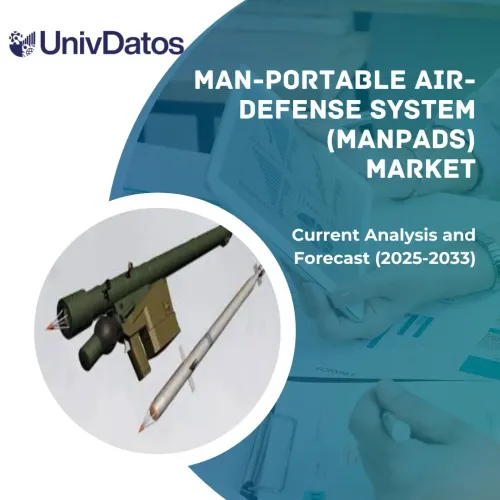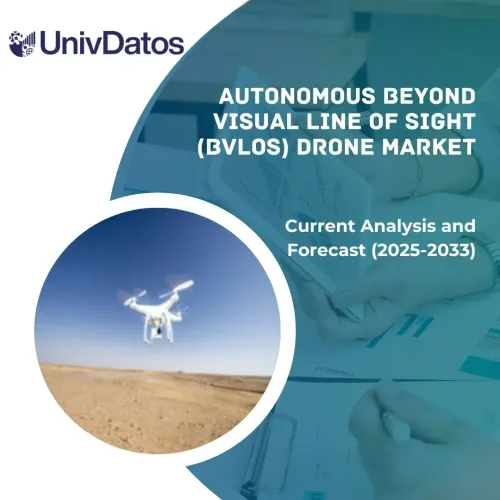- Home
- Chi siamo
- Settore
- Servizi
- Lettura
- Contattaci
Mercato dell'automazione aeroportuale: analisi attuale e previsioni (2024-2032)
Enfasi sul lato aeroporto (lato terra e lato volo); Livello di automazione (Livello 1, Livello 2, Livello 3 e Livello 4); Mercato finale (Greenfield e Brownfield); Sistema (Acquisizione e comunicazione dati, Automazione e controllo, Archiviazione dati, Software e soluzioni); Applicazione (Gestione e tracciamento bagagli, Trasporto terrestre e parcheggio, Vendita al dettaglio e ristorazione, Gestione delle strutture, Servizio e assistenza passeggeri, Risposta alle emergenze e sicurezza, Attrezzature di supporto a terra, Gestione del traffico aereo, Gestione dell'aerodromo e Altro) e Regione/Paese
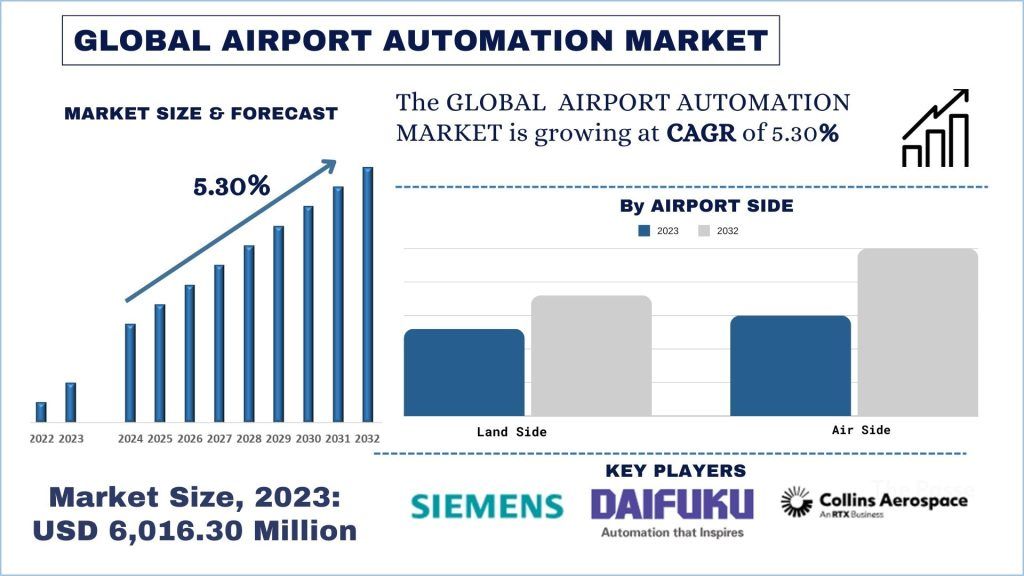
Dimensioni e previsioni del mercato dell'automazione aeroportuale
Il mercato dell'automazione aeroportuale è stato valutato a 6.016,30 milioni di dollari USA e si prevede che crescerà con un robusto CAGR di circa il 5,30% durante il periodo di previsione (2024-2032) a causa dell'aumento del traffico passeggeri e della necessità di norme di sicurezza più severe, efficienza, prezzi più bassi e maggiore efficienza operativa.
Analisi del mercato dell'automazione aeroportuale
L'industria aeroportuale si sta trasformando, guidata dalla crescente domanda di maggiore efficienza operativa, esperienze passeggeri fluide e sostenibilità. In prima linea in questa trasformazione c'è il fiorente mercato dell'automazione aeroportuale, pronto per una crescita significativa nei prossimi anni. Il mercato dell'automazione aeroportuale sta assistendo a un'impennata di innovazioni tecnologiche, che ridefiniscono il modo in cui gli aeroporti operano e interagiscono con i passeggeri.
Dai chioschi self-service per il check-in e i punti di controllo biometrici di sicurezza ai sistemi automatizzati di gestione dei bagagli e alle soluzioni di pulizia robotizzate, le ultime tecnologie di automazione aeroportuale stanno rivoluzionando ogni aspetto delle operazioni aeroportuali. Questi progressi semplificano i processi e migliorano la soddisfazione dei passeggeri riducendo i tempi di attesa e minimizzando gli errori umani.
Inoltre, l'integrazione di algoritmi di intelligenza artificiale (AI) e machine learning (ML) nei sistemi di automazione aeroportuale consente il processo decisionale in tempo reale, la manutenzione predittiva e l'allocazione ottimizzata delle risorse. Ad esempio, ad aprile 2024, Honeywell e Siemens hanno annunciato una partnership strategica per sviluppare una piattaforma di gestione aeroportuale basata sull'AI. Questa piattaforma mira a ottimizzare le operazioni aeroportuali sfruttando l'analisi dei dati e la modellazione predittiva, migliorando in definitiva l'efficienza operativa e riducendo le emissioni di carbonio.
Inoltre, il mercato dell'automazione aeroportuale sta assistendo a una maggiore attenzione alla sostenibilità e alla consapevolezza ambientale. I sistemi automatizzati sono progettati per ridurre al minimo il consumo di energia, ridurre gli sprechi e promuovere pratiche eco-compatibili. A marzo 2024, l'aeroporto di Amsterdam Schiphol ha presentato il suo Terminal 4 completamente automatizzato, dotato di illuminazione ad alta efficienza energetica, misure di conservazione dell'acqua e un sistema di gestione dei rifiuti all'avanguardia.
Poiché la domanda di viaggi aerei continua ad aumentare, il mercato dell'automazione aeroportuale è destinato a svolgere un ruolo fondamentale nel garantire che gli aeroporti rimangano competitivi, efficienti e sostenibili. Con continui progressi tecnologici e una crescente enfasi sull'esperienza dei passeggeri e sulla responsabilità ambientale, il mercato dell'automazione aeroportuale è destinato a raggiungere nuove vette nei prossimi anni.
Tendenze del mercato dell'automazione aeroportuale
Integrazione di intelligenza artificiale (AI) e analisi dei dati
L'integrazione dell'intelligenza artificiale (AI) e dell'analisi dei dati è una tendenza significativa che sta plasmando il futuro dell'automazione aeroportuale. Gli aeroporti generano grandi quantità di dati, tra cui il flusso di passeggeri, i movimenti degli aeromobili, i registri di manutenzione e le informazioni meteorologiche. Utilizzando l'AI e l'analisi avanzata dei dati, gli aeroporti possono ottenere informazioni preziose e ottimizzare le proprie operazioni, migliorando l'efficienza, la sicurezza e l'esperienza dei passeggeri. Ad esempio, a giugno 2023, l'aeroporto di Mumbai dovrebbe registrare un aumento del 10% dei voli grazie all'implementazione della tecnologia di intelligenza artificiale e machine learning (AI-ML). Questa tecnologia ha il potenziale per migliorare significativamente l'efficienza operativa dell'aeroporto. Il Ministero dell'Aviazione Civile ha inoltre annunciato miglioramenti nella situazione del traffico aereo all'aeroporto di Mumbai, con significative riduzioni dei ritardi negli arrivi dei voli. Inoltre, le principali aziende che operano sul mercato stanno sviluppando prodotti innovativi, come strumenti di gestione aeroportuale e sistemi di controllo del traffico aereo con torri digitali, per ottenere un vantaggio competitivo. Uno strumento di gestione aeroportuale è una piattaforma digitale dedicata progettata per automatizzare e migliorare le funzioni principali di un aeroporto, come l'elaborazione dei passeggeri, la gestione dei bagagli, le procedure di arrivo e partenza, i sistemi di controllo delle partenze, la diffusione delle informazioni e il controllo del traffico aereo (ATC). Ad esempio, nel 2024, SITA, una società tecnologica che fornisce servizi tecnologici aeroportuali agli aeroporti, ha lanciato il suo strumento di gestione aeroportuale chiamato Airport Operations Total Optimizer. Questa piattaforma sfrutta l'AI e i principi del Total Airport Management per ottimizzare varie funzioni aeroportuali, rispondendo alla crescente domanda di soluzioni digitali più intelligenti e pratiche commerciali sostenibili nel settore dell'aviazione. L'industria del trasporto aereo si sta orientando verso la digitalizzazione, concentrandosi su soluzioni tecnologiche chiave per rafforzare le operazioni contro le interruzioni, automatizzare l'esperienza dei passeggeri e fornire maggiore scalabilità e flessibilità. Questa digitalizzazione è fondamentale per il successo del settore nel garantire operazioni agili, resilienti ed efficienti.
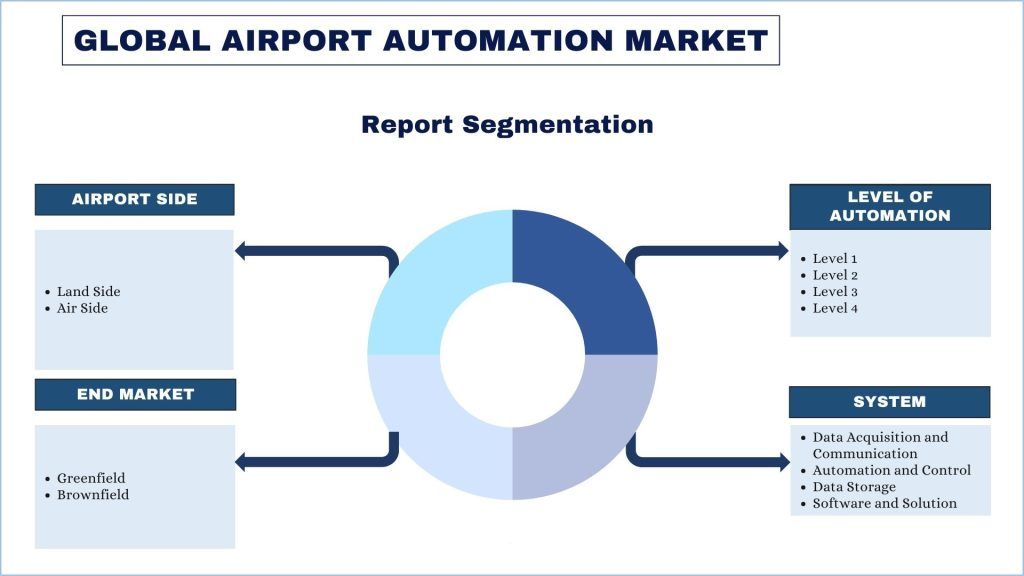
Il Nord America ha dominato il mercato dell'automazione aeroportuale
Il mercato dell'automazione aeroportuale del Nord America attualmente domina e si prevede che dominerà nel periodo previsto a causa di vari fattori, come l'impegno della regione per i progressi tecnologici e le operazioni efficienti. La regione, in particolare gli Stati Uniti, ospita alcune delle principali aziende tecnologiche e istituzioni di ricerca del mondo. Questo ambiente promuove l'innovazione e guida lo sviluppo di tecnologie di automazione all'avanguardia per gli aeroporti. Inoltre, molti aeroporti in Nord America sono sottoposti a significativi aggiornamenti e ampliamenti delle infrastrutture. L'automazione è fondamentale per modernizzare queste strutture e ottimizzare le operazioni per accogliere i volumi di passeggeri in crescita. Ad esempio, la Federal Aviation Administration (FAA) ha avviato un programma per finanziare progetti per il miglioramento della sicurezza aeroportuale, il potenziamento della capacità, la protezione e gli aspetti ambientali. I fondi FAA sono assegnati ad aeroporti pubblici e privati che soddisfano specifici standard di traffico, interessi nazionali e criteri geografici. Oltre a questi fondi, ci sono iniezioni di denaro dalla legge bipartisan sulle infrastrutture, la cosiddetta Job Act, che ha stanziato 15 miliardi di dollari in cinque anni per il settore aeroportuale.
Panoramica del settore dell'automazione aeroportuale
Il mercato dell'automazione aeroportuale è competitivo e concentrato, con pochi attori globali e internazionali. Gli attori chiave stanno adottando diverse strategie di crescita per migliorare la propria presenza sul mercato, come partnership, accordi, collaborazioni, lanci di nuovi prodotti, espansioni geografiche e fusioni e acquisizioni. Alcuni dei principali attori che operano sul mercato sono Siemens, Daifuku Co., Ltd., Collins Aerospace, Wipro, Amadeus IT Group SA, Vanderlande Industries B.V., Thales, Honeywell International Inc., SITA e NEC Corporation.
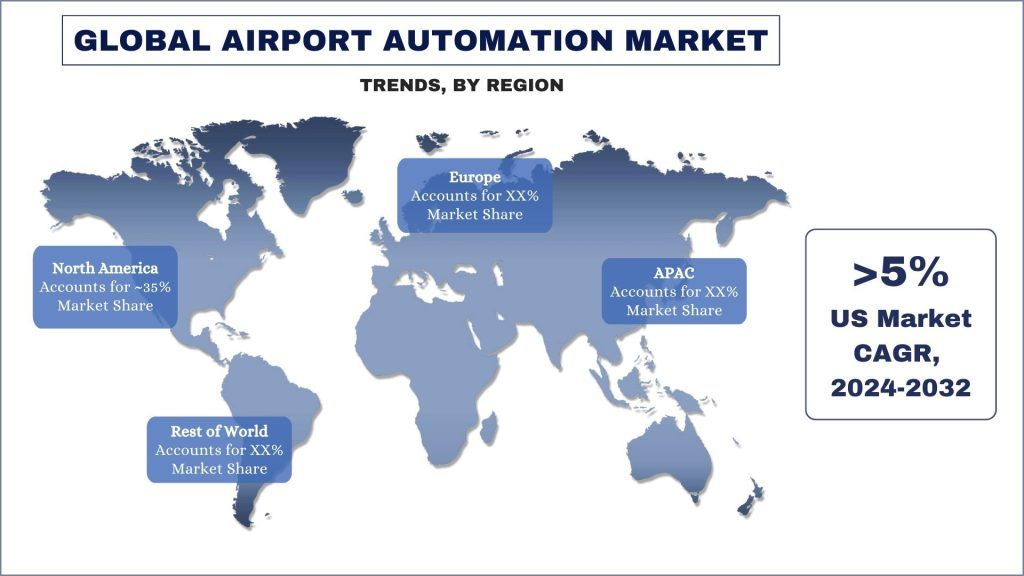
Notizie sul mercato dell'automazione aeroportuale
A settembre 2023, Vanderlande e l'operatore aeroportuale Avinor hanno formato una partnership di innovazione per esplorare modi per automatizzare completamente l'ultimo miglio del processo di gestione dei bagagli. La partnership mira ad automatizzare una parte del processo di gestione dei bagagli che è rimasta inalterata per oltre 50 anni. Lo scarico dei bagagli dal sistema di gestione dei bagagli sui contenitori diretti all'aeromobile è attualmente un'operazione ad alta intensità di lavoro e costosa. Secondo Avinor, circa il 50% dei costi relativi alla gestione dei bagagli sono sostenuti attraverso queste attività dell'ultimo miglio. Vanderlande fornirà due soluzioni innovative: BAGLOAD per il caricamento robotizzato integrato e FLEET Batch per il trasporto di ULD. Queste soluzioni saranno testate all'aeroporto di Oslo Gardermoen in Norvegia.
A novembre 2023, Sanad, una filiale di Mubadala Investment Company, ha firmato un accordo preliminare con Thales per sviluppare servizi industriali per la sicurezza aeroportuale, il traffico aereo e i sistemi avionici. Questa collaborazione mira a diversificare il portafoglio aziendale di Sanad verso i servizi industriali in Medio Oriente e Africa, sfruttando le sinergie con partner internazionali.
Copertura del rapporto sul mercato dell'automazione aeroportuale
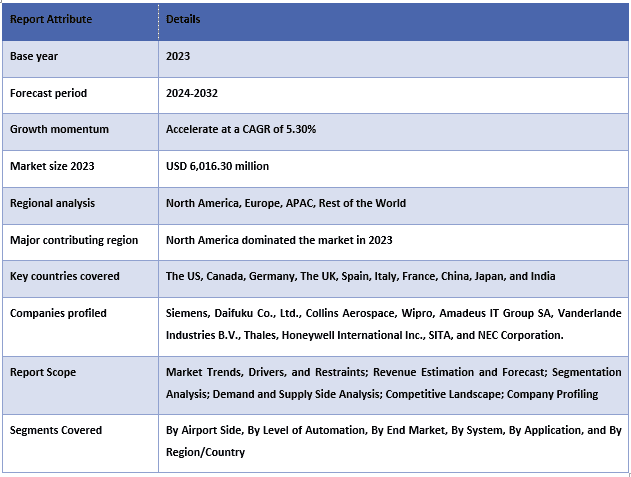
Motivi per acquistare questo rapporto:
- Lo studio include l'analisi delle dimensioni del mercato e delle previsioni convalidate da esperti chiave del settore autenticati.
- Il rapporto presenta una rapida panoramica delle prestazioni complessive del settore a colpo d'occhio.
- Il rapporto copre un'analisi approfondita dei principali operatori del settore con un focus primario sulle principali informazioni finanziarie aziendali, sui portafogli di prodotti, sulle strategie di espansione e sugli sviluppi recenti.
- Esame dettagliato di fattori trainanti, vincoli, tendenze chiave e opportunità prevalenti nel settore.
- Lo studio copre in modo completo il mercato attraverso diversi segmenti.
- Analisi approfondita a livello regionale del settore.
Opzioni di personalizzazione:
Il mercato globale dell'automazione aeroportuale può essere ulteriormente personalizzato in base alle esigenze o a qualsiasi altro segmento di mercato. Oltre a questo, UMI comprende che potresti avere le tue esigenze aziendali, quindi sentiti libero di contattarci per ottenere un rapporto che si adatti completamente alle tue esigenze.
Indice
Metodologia di Ricerca per l'Analisi del Mercato dell'Automazione Aeroportuale (2024-2032)
L'analisi del mercato storico, la stima del mercato attuale e la previsione del mercato futuro del mercato globale dell'automazione aeroportuale sono stati i tre passaggi principali intrapresi per creare e analizzare l'adozione dell'automazione aeroportuale nelle principali regioni a livello globale. È stata condotta un'esaustiva ricerca secondaria per raccogliere i dati di mercato storici e stimare le dimensioni del mercato attuale. In secondo luogo, per convalidare queste informazioni, sono stati presi in considerazione numerosi risultati e presupposti. Inoltre, sono state condotte anche approfondite interviste primarie con esperti del settore lungo tutta la catena del valore del mercato globale dell'automazione aeroportuale. Dopo l'ipotesi e la convalida dei dati di mercato attraverso interviste primarie, abbiamo impiegato un approccio top-down/bottom-up per prevedere le dimensioni complete del mercato. Successivamente, sono stati adottati metodi di ripartizione del mercato e di triangolazione dei dati per stimare e analizzare le dimensioni del mercato dei segmenti e sottosegmenti del settore di riferimento. La metodologia dettagliata è spiegata di seguito:
Analisi delle Dimensioni Storiche del Mercato
Fase 1: Studio Approfondito delle Fonti Secondarie:
È stato condotto uno studio secondario dettagliato per ottenere le dimensioni storiche del mercato dell'automazione aeroportuale attraverso fonti interne aziendali come relazioni annuali e bilanci, presentazioni sulle prestazioni, comunicati stampa, ecc. e fonti esterne tra cui riviste, notizie e articoli, pubblicazioni governative, pubblicazioni della concorrenza, relazioni di settore, database di terze parti e altre pubblicazioni credibili.
Fase 2: Segmentazione del Mercato:
Dopo aver ottenuto le dimensioni storiche del mercato dell'automazione aeroportuale, abbiamo condotto un'analisi secondaria dettagliata per raccogliere informazioni storiche sul mercato e quote per diversi segmenti e sottosegmenti per le principali regioni. I segmenti principali inclusi nel rapporto sono lato aeroporto, livello di automazione, mercato finale, sistema e applicazione. Ulteriori analisi a livello di paese sono state condotte per valutare l'adozione complessiva dei modelli di test in quella regione.
Fase 3: Analisi dei Fattori:
Dopo aver acquisito le dimensioni storiche del mercato di diversi segmenti e sottosegmenti, abbiamo condotto un'analisi dettagliata dei fattori per stimare le dimensioni attuali del mercato dell'automazione aeroportuale. Inoltre, abbiamo condotto un'analisi dei fattori utilizzando variabili dipendenti e indipendenti come il lato aeroporto, il livello di automazione, il mercato finale, il sistema e l'applicazione del mercato dell'automazione aeroportuale. È stata condotta un'analisi approfondita per scenari lato domanda e offerta considerando le principali partnership, fusioni e acquisizioni, espansioni aziendali e lanci di prodotti nel settore del mercato dell'automazione aeroportuale in tutto il mondo.
Stima e Previsione delle Dimensioni Attuali del Mercato
Dimensionamento Attuale del Mercato: Sulla base di informazioni utili derivanti dai 3 passaggi precedenti, siamo giunti alle dimensioni attuali del mercato, ai principali attori nel mercato globale dell'automazione aeroportuale e alle quote di mercato dei segmenti. Tutte le quote percentuali richieste e le ripartizioni del mercato sono state determinate utilizzando l'approccio secondario sopra menzionato e sono state verificate attraverso interviste primarie.
Stima e Previsione: Per la stima e la previsione del mercato, sono stati assegnati pesi a diversi fattori, inclusi driver e tendenze, vincoli e opportunità disponibili per le parti interessate. Dopo aver analizzato questi fattori, sono state applicate tecniche di previsione pertinenti, ovvero l'approccio top-down/bottom-up, per arrivare alla previsione di mercato per il 2032 per diversi segmenti e sottosegmenti nei principali mercati a livello globale. La metodologia di ricerca adottata per stimare le dimensioni del mercato comprende:
- Le dimensioni del mercato del settore, in termini di fatturato (USD) e il tasso di adozione del mercato dell'automazione aeroportuale nei principali mercati a livello nazionale
- Tutte le quote percentuali, le suddivisioni e le ripartizioni dei segmenti e sottosegmenti di mercato
- I principali attori nel mercato globale dell'automazione aeroportuale in termini di prodotti offerti. Inoltre, le strategie di crescita adottate da questi attori per competere nel mercato in rapida crescita.
Convalida delle Dimensioni e delle Quote di Mercato
Ricerca Primaria: Sono state condotte interviste approfondite con i Key Opinion Leaders (KOL) tra cui i dirigenti di alto livello (CXO/VP, Responsabile Vendite, Responsabile Marketing, Responsabile Operativo, Responsabile Regionale, Responsabile Paese, ecc.) nelle principali regioni. I risultati della ricerca primaria sono stati quindi riassunti ed è stata eseguita un'analisi statistica per dimostrare l'ipotesi dichiarata. I contributi della ricerca primaria sono stati consolidati con i risultati secondari, trasformando così le informazioni in informazioni utili.
Ripartizione dei Partecipanti Primari in Diverse Regioni
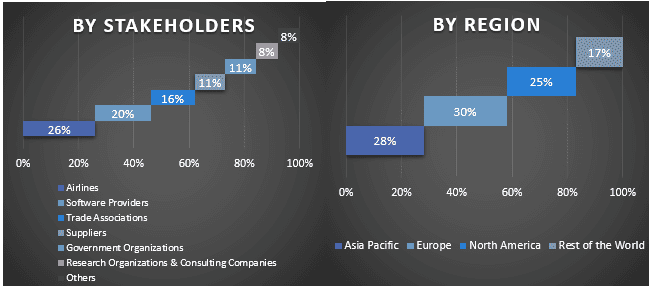
Ingegneria del Mercato
La tecnica di triangolazione dei dati è stata impiegata per completare la stima complessiva del mercato e per arrivare a numeri statistici precisi per ciascun segmento e sottosegmento del mercato globale dell'automazione aeroportuale. I dati sono stati suddivisi in diversi segmenti e sottosegmenti dopo aver studiato vari parametri e tendenze nelle aree del lato aeroporto, livello di automazione, mercato finale, sistema e applicazione nel mercato globale dell'automazione aeroportuale.
L'obiettivo principale dello Studio sul Mercato Globale dell'Automazione Aeroportuale
Le tendenze di mercato attuali e future del mercato globale dell'automazione aeroportuale sono state individuate nello studio. Gli investitori possono ottenere informazioni strategiche per basare la loro discrezione per gli investimenti sull'analisi qualitativa e quantitativa eseguita nello studio. Le tendenze di mercato attuali e future hanno determinato l'attrattiva complessiva del mercato a livello regionale, fornendo una piattaforma al partecipante industriale per sfruttare il mercato non sfruttato per beneficiare di un vantaggio di first-mover. Altri obiettivi quantitativi degli studi includono:
- Analizzare le dimensioni attuali e previste del mercato dell'automazione aeroportuale in termini di valore (USD). Inoltre, analizzare le dimensioni attuali e previste del mercato di diversi segmenti e sottosegmenti.
- I segmenti nello studio includono le aree del lato aeroporto, il livello di automazione, il mercato finale, il sistema e l'applicazione.
- Definire e analizzare il quadro normativo per l'automazione aeroportuale
- Analizzare la catena del valore coinvolta con la presenza di vari intermediari, insieme all'analisi dei comportamenti dei clienti e dei concorrenti del settore.
- Analizzare le dimensioni attuali e previste del mercato dell'automazione aeroportuale per la regione principale.
- I principali paesi delle regioni studiati nel rapporto includono Asia Pacifico, Europa, Nord America e il resto del mondo
- Profili aziendali del mercato dell'automazione aeroportuale e le strategie di crescita adottate dagli attori del mercato per sostenersi nel mercato in rapida crescita.
- Analisi approfondita a livello regionale del settore
Domande frequenti FAQ
D1: Qual è la dimensione attuale del mercato e il potenziale di crescita del mercato dell'automazione aeroportuale?
Q2: Quali sono i fattori trainanti per la crescita del mercato dell'automazione aeroportuale?
Q3: Quale segmento detiene la quota di mercato maggiore per l'automazione aeroportuale in base al lato aeroportuale?
Q4: Quali sono le tecnologie e le tendenze emergenti nel mercato dell'automazione aeroportuale?
Q5: Quale regione dominerà il mercato dell'automazione aeroportuale?
Correlati Report
I clienti che hanno acquistato questo articolo hanno acquistato anche





